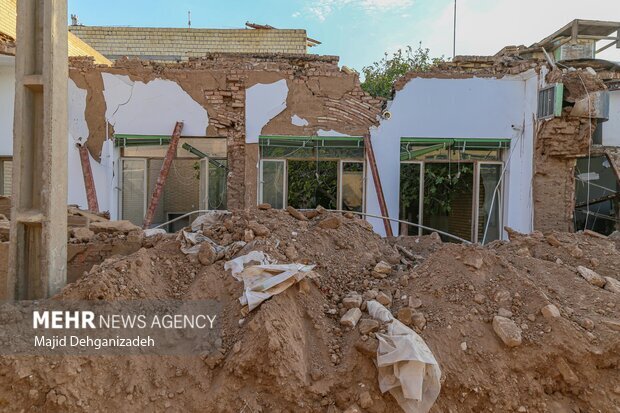Monsoon floods inflict $83 million economic toll on Yazd, tourism minister says

TEHRAN—Torrential downpours in the historical core of Yazd have caused some 25 trillion rials ($83m) in damage, Iran’s tourism minister Ezzatollah Zarghami said on Monday.
“Losses from the natural catastrophe in the historical core of Yazd totals around 25 trillion rials,” according to the Minister of Cultural Heritage, Tourism, and Handicrafts.
Dozens of flash floods ravaged 735 mudbrick houses and structures in the ancient oasis city over the past couple of days, the minister said.
Yazd is chock-full of adobe houses, mansions, bazaars, public bathhouses, water cisterns, mosques, synagogues, Zoroastrian temples, and centuries-old gardens. From the divine point of view, the city enjoys the peaceful coexistence of three religions: Islam, Judaism, and Zoroastrianism.
During the last few days, flash flooding in 17 provinces of the country claimed 32 lives and left 25 people missing. Sistan-Baluchestan, Tehran, Fars, Kerman, Hormozgan, Qom, Semnan, Mazandaran, Yazd, East Azarbaijan, South Khorasan, Golestan, Isfahan, Bushehr, Kohgiluyeh-Boyer Ahmad, Markazi, and Chaharmahal-Bakhtiari are the provinces ravaged by the heavy rainfalls.
A UNESCO World Heritage, Yazd is regularly referred to as a delightful place to stay, or a “don’t miss” destination by almost all of its visitors. The city is full of mudbrick houses that are equipped with innovative badgirs (wind catchers), atmospheric alleyways, and many Islamic and Iranian monuments that shape its eye-catching city landscape.
Cultural heritage experts believe that Yazd is a living testimony to the intelligent use of limited available resources in the desert for survival. Water is brought to the city by the qanat system. Each district of the city is built on a qanat and has a communal center. Furthermore, the use of earth in buildings includes walls and roofs through the construction of vaults and domes. Houses are built with courtyards below ground level, serving underground areas. Wind-catchers, courtyards, and thick earthen walls create a pleasant microclimate.
Yazd is home to numerous qanats which have supplied water to agricultural and permanent settlements for thousands of years. The man-carved underground qanat system relies on snow-fed streams flowing down the foothills of surrounding mountains. The earliest water supply to Yazd is estimated to date from the Sassanid era (224 to 651 CE). However, many others have been continually repaired and used over time, and most surviving Ab-Anbars (traditional mudbrick cisterns) can be today traced to the late Safavid and Qajar periods.
AFM
Leave a Comment